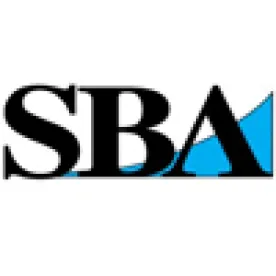Background
On March 27, 2020, the President signed the Coronavirus Aid, Relief, and Economic Security Act of 2020 (the “CARES Act”) into law. The Paycheck Protection Program (the “PPP”), one of the CARES Act’s featured relief programs, is a loan guarantee program administered by the United States Treasury (the “Treasury”) and Small Business Administration (the “SBA”) through which financial institutions can make forgivable loans of up to $10,000,000 to small business concerns, business concerns with fewer than 500 employees, and certain other eligible borrowers. As of May 6, 2020, lenders have approved more than 4,102,369 loans totaling nearly $525.8 billion.
Inspector General’s Report
On May 8, 2020, the Office of the Inspector General (“OIG”) issued a report (the “Report”) following its initial review of the SBA’s implementation of the PPP. In performing its review, the OIG analyzed provisions of Section 1102 of the CARES Act, which established the PPP, the SBA’s Interim Final Rules on the PPP, and public guidance from the SBA and Treasury.
While the OIG found that the SBA’s Interim Final Rules and guidance contained in the SBA’s Frequently Asked Questions (“FAQ”) were generally consistent with the CARES Act and the Paycheck Protection Program and Health Care Enforcement Act, certain areas were inconsistent or lacking in guidance:
-
Prioritization of underserved and rural markets. Section 1102 of the CARES Act states that the SBA should issue guidance to lenders and loan agents to ensure that the processing and disbursement of PPP loans prioritizes small business concerns and entities in underserved and rural markets, including entities owned by veterans and members of the military community, small business concerns owned and controlled by socially and economically disadvantaged individuals and women, and businesses in operation for fewer than two years. The OIG found that the SBA had not, to date, issued such guidance to lenders. Additionally, the SBA has not included optional standard demographic information for principals on its standard PPP loan application (though lenders are permitted to use their own applications if they wish).
-
Parameters around loan forgiveness. The CARES Act outlines allowable uses for PPP loans, including payroll costs, payments of interest on mortgage obligations (excluding prepayment of or payment of principal), rent, utilities, and interest on other debt obligations incurred before the covered period. Further, the CARES Act does not specify any restrictions on the portion of a loan that should be used for any particular expense. The SBA’s guidance in its Interim Final Rules, however, do not align with the CARES Act, as the SBA guidance specifies that at least 75% of PPP loan proceeds must be used for payroll expenses in order for the loan to be eligible for complete forgiveness. Further, while the CARES Act allows a maximum loan maturity of 10 years, the SBA’s guidance established a 2-year maturity for loan proceeds that are not eligible for forgiveness. The OIG believes that the SBA’s guidance on loan forgiveness to date may place an undue burden on borrowers. Its review of data from the first round of PPP loans shows that tens of thousands of borrowers would not meet the 75% payroll cost threshold, which would result in such borrowers having to repay any amounts of non-payroll costs over 25% of the loan within two years.
-
Guidance on loan deferments. The CARES Act requires the SBA to provide guidance to lenders on the deferment process within 30 days of its enactment. Further, Section 1102 of the CARES Act requires lenders to provide complete payment deferment relief for borrowers with covered loans for a period of not less than six months and not more than one year. As of the date of the Report, the OIG found that the SBA had failed to issue any guidance on the deferment process for PPP Loans, which may result in uncertainty for both lenders and borrowers under the program with respect to repayment of any loan balances that are not eligible for forgiveness. Absent such guidance, lenders may not be adequately prepared to service loans with unforgiven balances and borrowers may be unclear on their repayment requirements with respect to such balances.
-
Registration of loans. Section 1102 of the CARES Act states that the SBA shall register loans using an applicant’s Taxpayer Identification Number no later than 15 days following the date on which a loan was made. The OIG found no evidence that the SBA was registering loans as required.
Recommended Actions for the SBA
To better align PPP requirements with the provisions of the CARES Act, the OIG recommends that the SBA do the following:
-
Issue guidance to lenders requiring that lenders prioritize borrowers in underserved markets and revise the borrower application to include the collection of optional demographic information for borrowers’ principals;
-
For loans that have already been disbursed, include optional demographic information on forms used to request loan forgiveness;
-
Evaluate the potential negative impact to borrowers regarding the specified percentage of loan proceeds eligible for forgiveness and update the requirements as necessary;
-
Issue guidance to lenders on the deferment process for PPP loans; and
-
Register PPP loans by Taxpayer Identification Number.
The OIG review of the SBA’s guidance and implementation of the PPP is ongoing.






 />i
/>i

